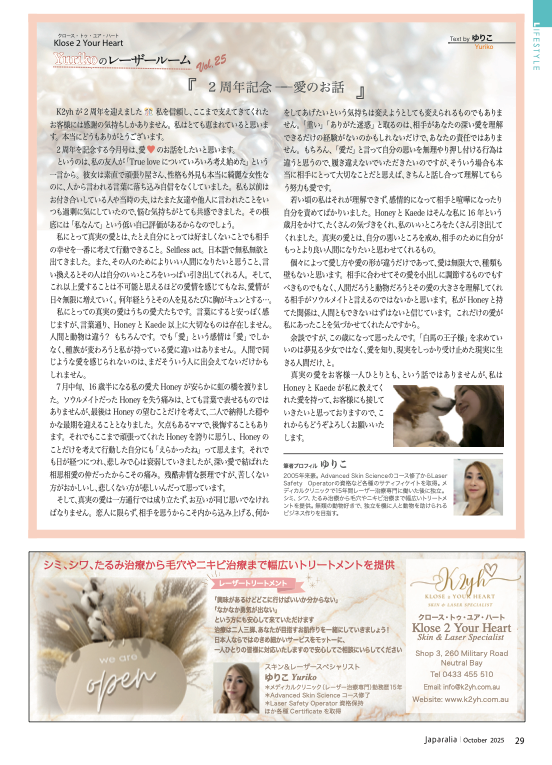Japaralia June Vol. 21
- Yuriko Ono
- May 31
- 3 min read

English translation by Perplexity below
Vol. 21 Collagen
It’s gotten quite cold lately—how is everyone doing? Due to the sudden change in temperature and my busy schedule, I’m feeling a bit under the weather for the first time in years. 😷
Now, this month’s topic is a big one: collagen.
When you hear “collagen,” the first thing that probably comes to mind is the essential ingredient for firm, youthful skin. But collagen isn’t just found in the skin—it’s a protein that exists in vital parts of the body such as bones, blood vessels, muscles, and joints. After age 30, the amount of collagen produced in the body decreases year by year as you approach menopause, and drops dramatically after menopause. That’s why, in your 40s and 50s, not only does your skin sag, but you may also experience joint pain, more visible veins, and brittle bones.
At 48 years old, I’m experiencing this firsthand. Rather than just watching it happen, I want to do what I can to stay healthy and youthful from both the inside and out. After all, it’s always nice to be seen as young.
Over 20 years ago, when I was in my mid-twenties, I used to take fish collagen supplements in Japan. Back then, there was this idea that you were past your prime after 25, so looking back, I laugh at how anxious I was—but even at that young age, I saw improvements in my skin and eyelashes soon after starting fish collagen. It was expensive, but I kept taking it, and when I moved to Sydney at 28, I brought several months’ worth with me. I tried to find fish collagen here, but even collagen supplements in general were hard to find at the time. Even now, as collagen is finally getting attention, marine collagen is available, but the fish collagen I wanted wasn’t, so I gave up.
After I became independent, Paul, the president of a New Zealand company, reached out to me. He’s Polish and introduced me to fish collagen from his home country. With his vast knowledge from working in the pharmaceutical industry, he shared a lot of research and papers with me. To sum up, for the first time since coming to this country, I found collagen that was exactly what I was looking for (if not better!). After using and taking it myself, I was amazed. I was so excited that I decided to apply it to my clients’ skin after treatments and to keep using it myself no matter what.
VitaCare’s fish collagen is extracted from fish skin, bones, and scales, and mainly contains type I collagen—the type most abundant in human skin. Not only does it give your skin a fresh, firm appearance, but applying it directly to wounds also helps them heal faster and more beautifully. During the healing process, type III collagen is produced first as a temporary fix, and then, over time, type I collagen repairs the skin. People prone to keloids have trouble producing type I collagen, so only type III builds up, resulting in raised scars. This Pure Collagen can be applied immediately after treatments, allowing collagen to penetrate deeply and promote recovery.
At K2yh, we carefully select three types of supplements: collagen, vitamin C, and astaxanthin (an antioxidant), which help alleviate menopausal symptoms. This is also a big topic, so I’ll talk about it another time.
This product is made in Poland and has been distributed in Europe for a long time. Paul’s company, VitaCare, based in New Zealand, is the official distributor, and I purchase it from them. It’s not cheap, but it’s such a good product that I offer it at a much lower price than the recommended retail price (RRP). I hope this allows more people to experience the benefits of this collagen.
It takes about two weeks from order to delivery, and since I can’t keep a large stock, there may be times when it’s out of stock if it sells out quickly. If you’re interested, please check availability.







Comments